Homemade Shiso Pesto takes just 10 minutes to make and is one of the best ways to enjoy a bounty of fresh green shiso (perilla) leaves. Just like traditional basil pesto, this vegetarian-friendly recipe uses pine nuts, garlic, Parmesan or Romano cheese, and extra virgin olive oil.
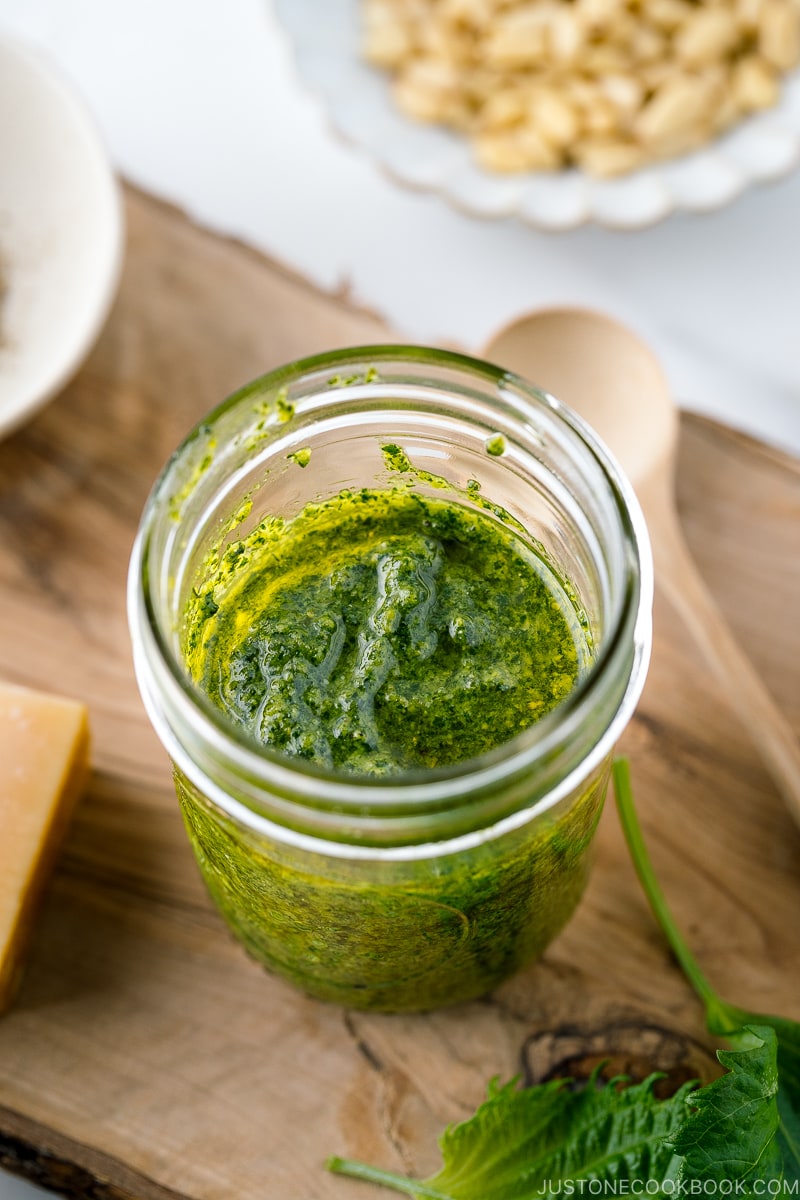
This is my second year growing green shiso leaves in my backyard. A kind and generous JOC reader, Bobby, gifted us a few red and green shiso plants and I’ve been successfully growing them. Shiso is my absolute favorite Japanese herb so you can imagine how happy I am that I can now harvest them in my own yard.
When I get plenty of shiso leaves, I make Homemade Shiso Pesto (大葉ジェノベーゼ) and freeze it for later use. No access to shiso? You can use this pesto recipe with basil, arugula, baby spinach, kale, and parsley. They are equally delicious!
Table of Contents

What is Shiso?
Also known as perilla leaf or beefsteak leaf, shiso is an aromatic herb from the same botanical family as mint. Shiso leaves have a fresh, citrusy, minty, bitter flavor with a texture similar to mint leaves.
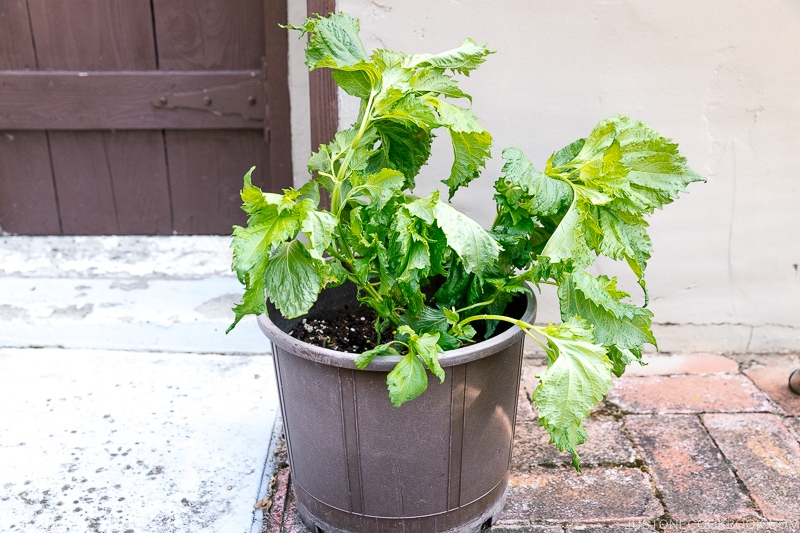
There are two types of shiso:
- Green shiso – Aojiso (青紫蘇) or Ooba (大葉): Often used as an edible food separator or garnish as it helps prevent the spoilage of food. The whole leaves are used for sashimi and tempura, and the julienned shiso leaves are garnished on top of Cold Tofu (Hiyayakko), pasta, and salad. Chopped shiso leaves are included in meatballs and there are so many other possibilities!
- Red shiso – Akajiso (赤紫蘇): More astringent and bitter flavor; therefore, red shiso leaves are mostly used for dyeing foods with their rich red color, such as in making Pickled Plum (Umeboshi) and Red Pickled Ginger (Beni Shoga). It’s also used for Shiso Rice Seasoning (Yukari) and Aka Shiso Juice.
Green shiso leaves are used in our cooking all year round, in a similar use as scallions or parsley. On the other hand, red shiso is used mostly during the summer months to make specific recipes.
Where to Get Shiso
You can always purchase green shiso at the produce section of Japanese grocery stores all year round. Red shiso leaves might be tricky to find, and only available during the umeboshi-making season around July.
Don’t get confused with Korean perilla leaves. They are rounder and larger, and taste differently from shiso leaves.
Fresh shiso leaves dry out easily, so wrap them in a damp paper towel before placing in a plastic bag, and store in the crisper/vegetable section of the refrigerator for a week.
Plant Your Own Shiso
Reese, one of JOC team members aka my sidekick who lives in Minnesota, has grown her own shiso in a raised planter box one year. She bought the seeds from Gaea’s Blessing on Amazon, planted them in early spring, and started harvesting in June. According to Reese, growing shiso from seeds requires extra steps, so it is important to follow the instructions in prepping the seeds, but once that’s taken care of, the rest is easy.
This year in May, I planted shiso seeds that were harvested from my friend’s shiso late last summer. Shiso plants sprouted 2 weeks after I planted and grew really well. I continue to harvest leaves as soon as they are a good size (3-4 inches in length) and they continue to produce more new leaves!
If you’re interested in growing your own shiso, you can also check seeds from this company online.
Tips: Perilla seeds are very hard, so they need to be softened by soaking them in water overnight. Covering the seeds with too much soil will delay germination, so plant the seeds 1/4 inch (6 mm) below the surface. Make sure to water every day until spouted. The ideal temperature for shiso to grow is above 68ºF (20ºC) so make find the right timing for your climate.
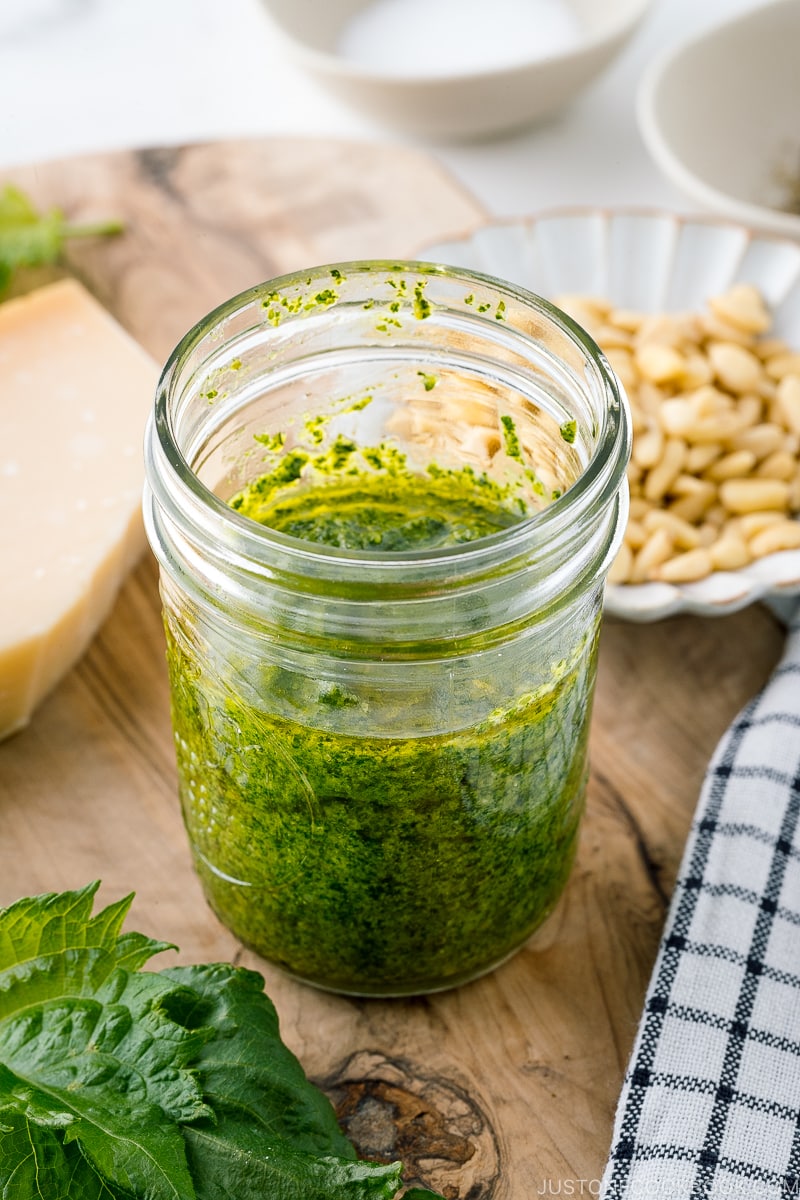
Making Shiso Pesto
The Ingredients You’ll Need
- Green shiso leaves (Substitute: basil, arugula, baby spinach, kale, parsley, etc)
- Pine nuts (Substitute: walnut, cashews, almonds, etc) – They’re tender, buttery, and high in fat, so they yield smoother pesto. If time allows, I recommend toasting the nuts as they will yield an additional savory flavor and fragrance.
- Garlic – Don’t skip, but you can add more.
- Parmigiano-Reggiano cheese – Go with the weight measurement. Remember that freshly grated cheese is aerated so you need more by volume for the same amount by weight.
- Salt and pepper – Don’t be afraid to season it with salt, as it amplifies the flavor.
- Extra virgin olive oil – Use good quality olive oil, please.
The Cooking Steps
It’s easy! Pulse all the ingredients (except for the oil) in a food processor or blender. I recommend adding in the oil last after the rest of the ingredients are blended well. However, I usually pour in the oil at once, instead of adding in a slow stream while processing, and it works fine.
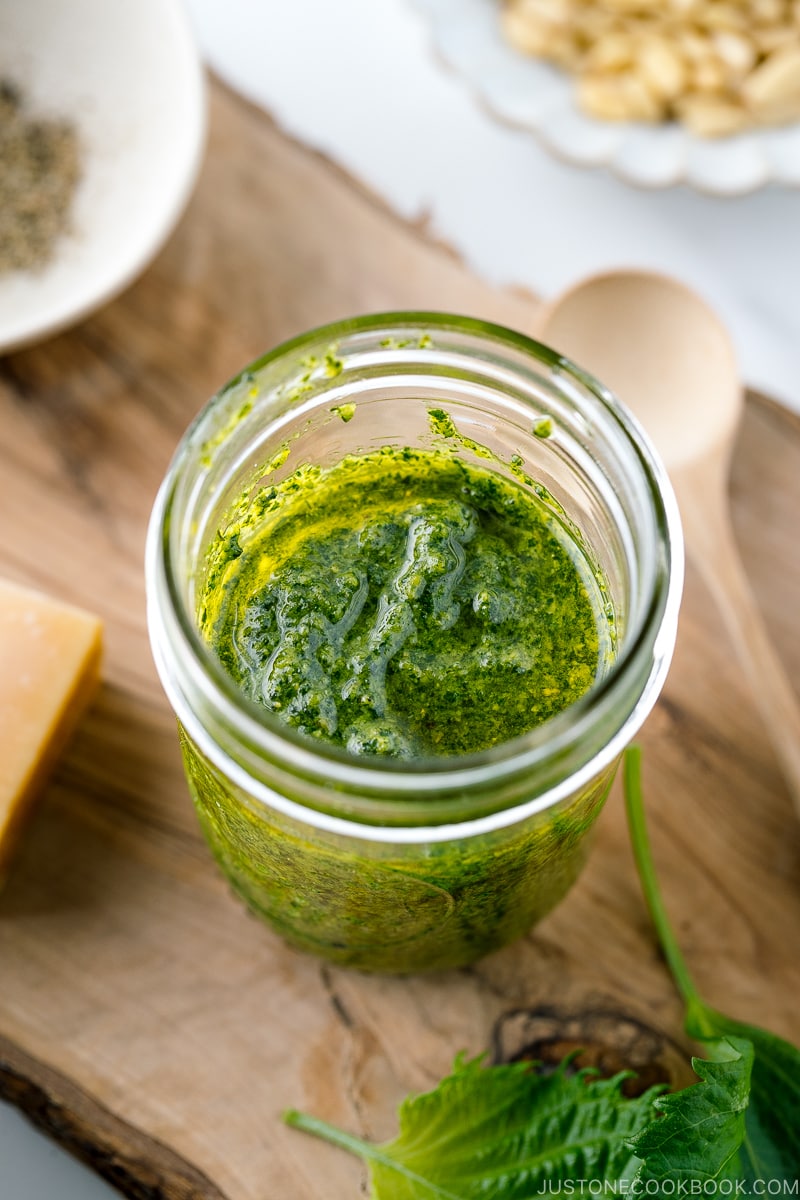
3 Important Tips to Remember
- Process in 3 steps (my method) – I usually process shiso leaves, nuts, and garlic first so there’s enough space in the food processor for the freshly grated cheese. Then run the food processor. Finally, add in the oil and run one last time to finish making the pesto.
- Cover the pesto with oil – Before storing, add a thin layer of olive oil to protect the pesto from turning brown due to contact with air.
- Keep refrigerated – Keep the pesto in a clean/sterilized airtight jar and store in the fridge (all times) for 5 days or in the freezer for 3 months (could be longer).
Delicious Ways to Use Homemade Shiso Pesto
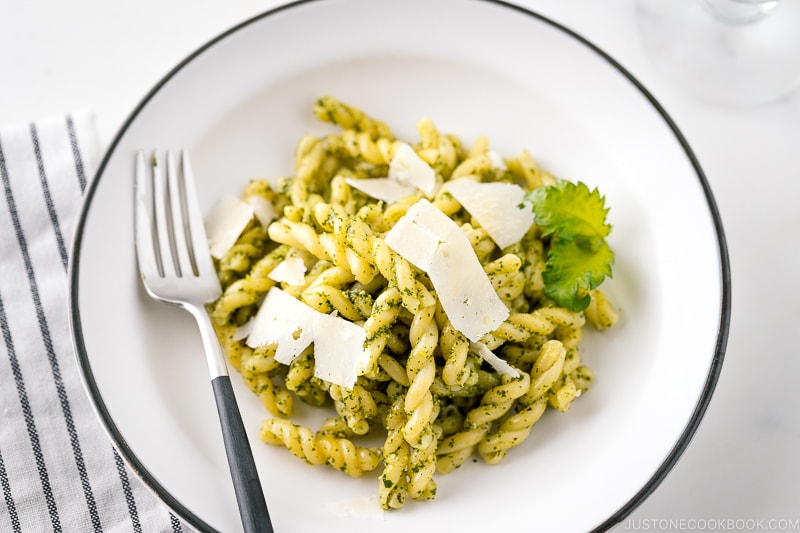
I’m sure you can come up with many ways to enjoy this delicious homemade shiso pesto. But if you’re in need of inspiration, here are a few ideas:
- Use it as a pasta sauce (See my Shiso Pesto Pasta)
- As a spread on sandwiches, flatbreads, or bruschetta
- Make a salad dressing
- Enjoy it with eggs
- Use as a veggie dip
- Stuff chicken and roast
- Slather and cook the protein of your choice
- Coat the veggies and roast
- Garnish a soup
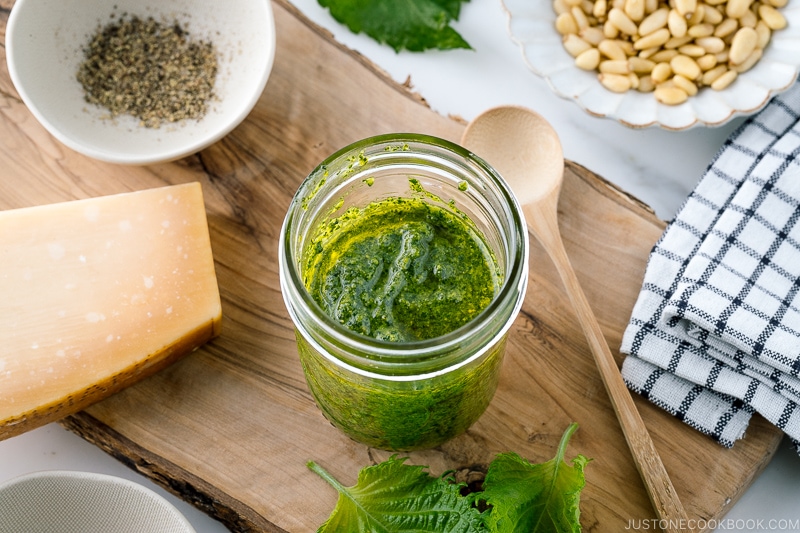
Wish to learn more about Japanese cooking? Sign up for our free newsletter to receive cooking tips & recipe updates! And stay in touch with me on Facebook, Pinterest, YouTube, and Instagram.
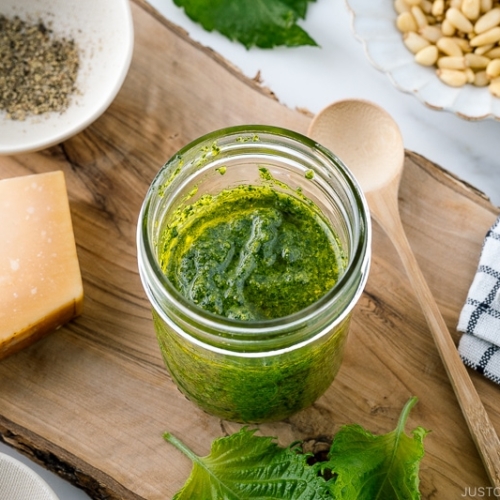
Homemade Shiso Pesto
Ingredients
- 1 oz shiso leaves (perilla/ooba) (30 leaves or 25 extra large leaves; you can substitute basil, arugula, baby spinach, kale, or parsley)
- 3 Tbsp pine nuts (1 oz, 30 g; toasted, preferably; you can substitute walnuts, cashews, or almonds)
- 2 cloves garlic (peeled)
- 1 oz Parmigiano-Reggiano or Parmesan cheese (a bit less than ⅓ cup if freshly grated; ¼ cup if pre-shredded)
- ½ tsp Diamond Crystal kosher salt
- ⅛ tsp freshly ground black pepper
- ¼ cup extra virgin olive oil (plus a little bit more to cover the pesto in the final step)
Instructions
- Gather all the ingredients. If time allows, toast the pine nuts first in a non-greased pan for a few minutes until light brown and let cool.

- Place 1 oz shiso leaves (perilla/ooba), 3 Tbsp pine nuts, and 2 cloves garlic into the bowl of a food processor.

- Pulse several times until smooth.

- Add 1 oz Parmigiano-Reggiano or Parmesan cheese, ½ tsp Diamond Crystal kosher salt, and ⅛ tsp freshly ground black pepper.

- Pulse several times more until incorporated.

- Add ¼ cup extra virgin olive oil. Note: I never had any issue adding the olive oil all at once. However, if you‘re concerned about emulsification, slowly drizzle in the olive oil with the food processor or blender still running.

- Process until smooth. Add a touch of extra oil, if required, to help it blend.

- Stop and scrape down the sides of the food processor with a rubber spatula and run again until the mixture is smooth. Taste and adjust the seasoning with more salt and freshly ground black pepper, if needed.

- Pour the pesto into a clean, sterlized jar. Cover the pesto with a thin layer of olive oil on top. Close the lid.

To Serve
- Use Homemade Shiso Pesto in any recipe that calls for traditional pesto. Try it in my Shiso Pesto Pasta recipe!

To Store
- Store in the refrigerator for 5 days or in the freezer for 3 months (could be longer).
Nutrition
Editor’s Note: This post was originally published on July 6, 2021. It’s been republished with more information on August 8, 2023.
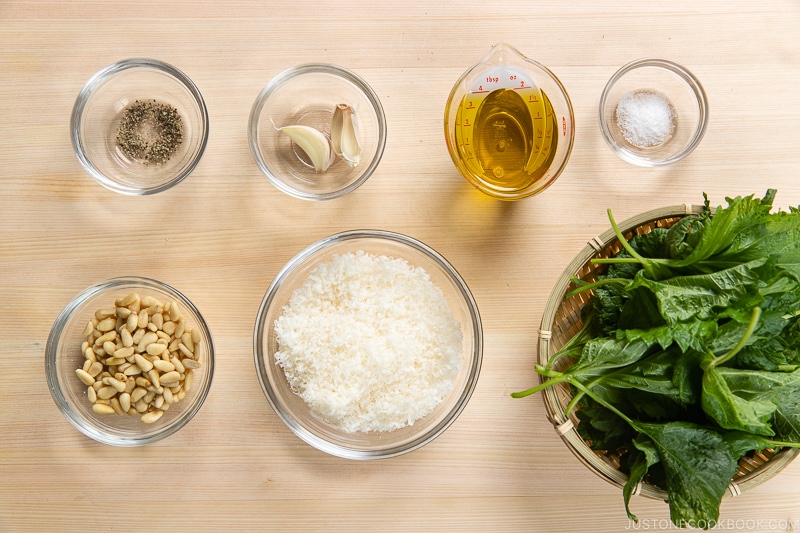
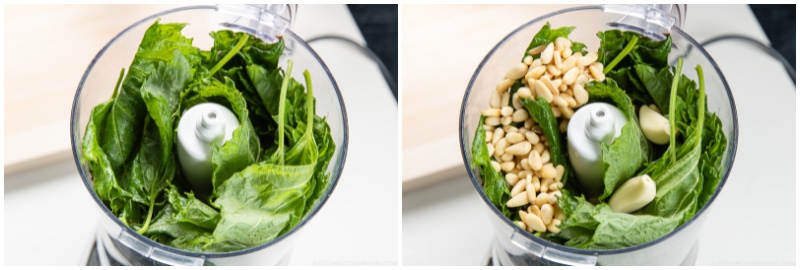
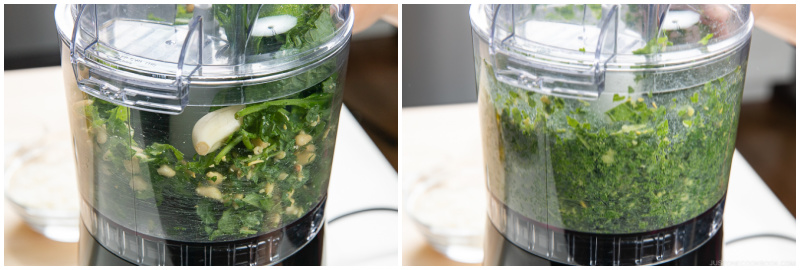
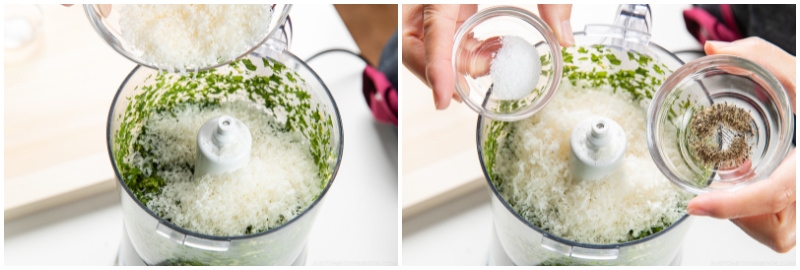
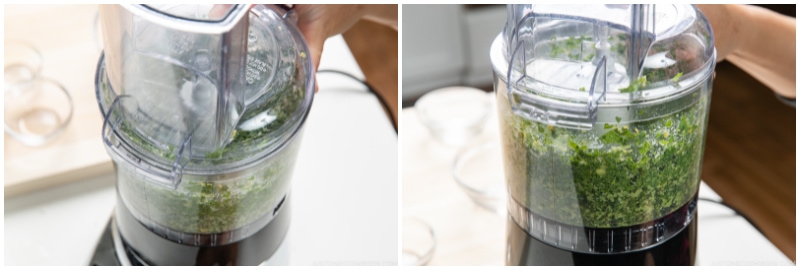
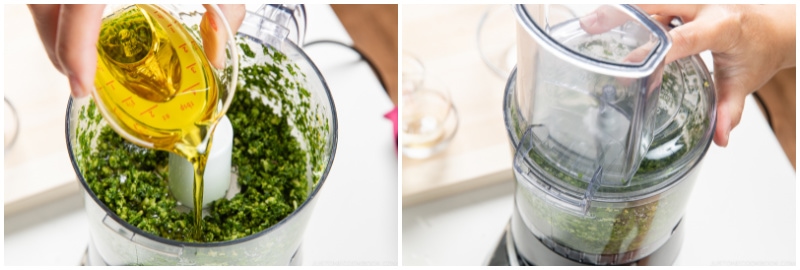
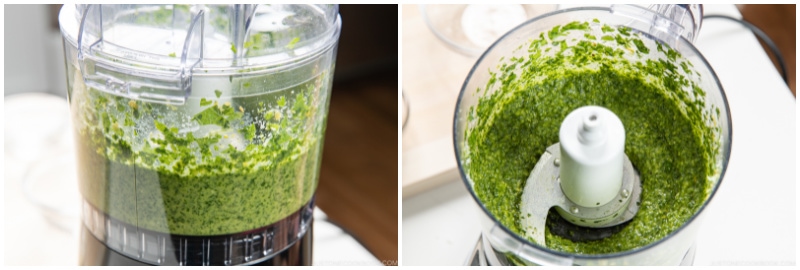
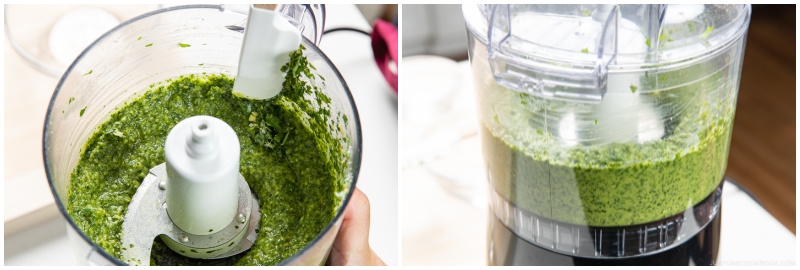
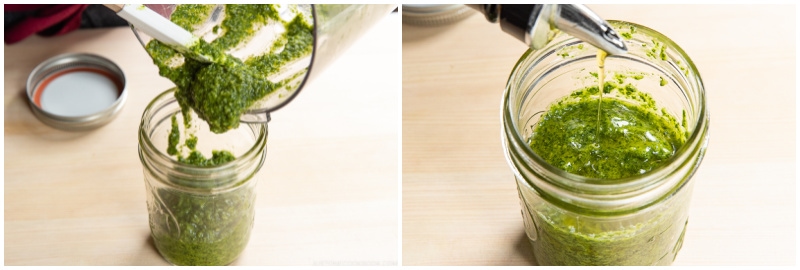










I made the Shiso pesto and everyone I serve it to loves it! We grew our own Shiso, just to make more pesto.
We had a family get together and I used the Shiso Pesto on baked salmon. It was delicious and a huge hit!
Hello there! Homegrown Shiso must be even more delicious for making this pesto!
We are happy to hear that Shiso pesto was well received by everyone and that it worked well even on the baked salmon!🤩 Thank you so much for trying Nami’s recipe and sharing your experience with us!
I’ve grown shish for many years. Luckily for me it comes back each year. I made this pesto recipe but I blanch the shish leaves for about 15 seconds first then shock them in ice water and squeeze out all the water. I used toasted almonds. The recipe came out great! BTW blanching the shiso prevents the pesto from browning, keeping it bright green. Thank you!
Hi Esther! Thank you very much for reading Nami’s post and sharing your tip with us.🤗
Happy Cooking!
Hi! For the shiso leaves, it it 30 leaves total and 25 should be large for a total of 55? Or 25 large leaves and 5 smaller ones? Thanks!
In the Chicago area we planted a little shiso about 10 years ago. Now it grows like weeds. Just made our 4th batch of 100 leaves each thi year using this recipe – love it!
Hi Robert! Thank you for reading Nami’s post and trying her recipe!
4th batch of homegrown 100 leaves! That is amazing!🤩
Happy Cooking and Gardening!
Is this good with red shiso? I have that growing, but have no access to green.
Hi Kate, Thank you very much for reading Nami’s recipe!
Red shiso contains astringency (‘aku‘ in Japanese), and we usually knead and massage the leaves with salt first before use or boil them.
If you add the steps to this recipe, it might work. But we have never tried with Red shiso before. If you try it, please let us know!
Here are the other Red shiso recipes that you may enjoy:
https://www.justonecookbook.com/red-shiso-juice/
https://www.justonecookbook.com/how-to-make-umeboshi/
We hope this helps!
I have tried this recently and it worked quite well for us! The pesto gets a dark, almost black color and additional salt in the pesto is not needed. We really liked it.
Hello, Agnes! Wow! Thank you for taking the time to tell us about your experience. This is very helpful!
Thank you very much! 🙂
I was lucky enough to find shiso at a Korean grocery store recently, so I made this pesto today and put it on pasta for lunch. So tasty and easy to put together! I used walnuts instead of pine nuts, and Follow Your Heart brand vegan parmesan.
This turned out delicious and was very easy to make. We grow Shiso indoors year-round using an Aerogrow and it comes up like weeds!
Hi Noah! Wow, That is amazing! Thank you very much for trying Nami’s recipe and sharing the tip with us.
I’m not a fan of Pesto…BUT I am experimenting with a Shiso oil… when I use it I add some lemon juice and the flavor pops. if you can perfect a shiso oil I’d be estatic. right now I’m at blanching 2 C packed Shiso leaves…. blanch for 10 secs and then in a blender 2 cloves of garlic, dash of red pepper and blend… add oil to a consistency I want and salt to ta… LOL. I’ll n ever be in competition for a wonderful recipe creator as you!
Hi Mary, Thank you very much for reading Nami’s post and for your request! We’ll make sure to add the recipe to Nami’s list. 🙂!
Can you specify which green shiso variety you use? I have several green shiso plants in my garden…but they do not have ruffled leaves…Please advise. Thank you.
Hi Judy! Thank you very much for reading Nami’s post!
Her Green Shiso is called “Perilla Green Ao Shiso” https://www.kitazawaseed.com/seed_035-169.html
We hope this helps!
I recently planted some shiso seeds that I got from Kitazawa seed company but the plants are still very young. I never would have thought of using shiso like this, but I can’t wait to try it!
Hi DelMar! Thank you for reading Nami’s post!
We are glad to hear you found a new way to enjoy Shiso from our website.😊
Nami has many Shiso recipes to share! We hope you enjoy them! https://www.justonecookbook.com/search/?q=shiso
Happy Gardening and Cooking!
Would your friend be willing to share what steps are needed to prep Shiso seeds? Many Thanks!
Hi Yoko, Thank you for reading Nami’s post!
Yes! We found a good website that teaches us how to grow Shiso from seeds. https://harvesttotable.com/how-to-grow-shiso/
We hope this helps!
Sorry just saw this now Will be making this soon can i use vegan parmesan as am a vegan i never had shiso pesto before i need to find shiso in Singapore i love pesto soooooooooooo much perfect for my pesto wraps sorry i took a break from commenting on your recipes as busy with work will dm you if i make this and let you know how it goes Thanks Ramya
Hi Ramya! Thank you very much for reading Nami’s post and trying her recipe!
We have never tried vegan parmesan before in this recipe, and not sure how the outcome will be, but it would work. Please let us know how it goes!
@Ramya – I made it with Follow Your Heart vegan parm and it came out really good!
Hi Cat! Awesome! We are so happy to hear you enjoyed the dish!
Thank you very much for trying Nami’s recipe and sharing your cooking experience with us!